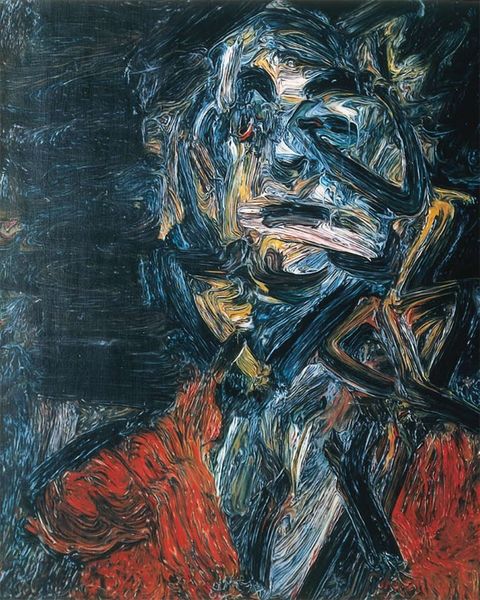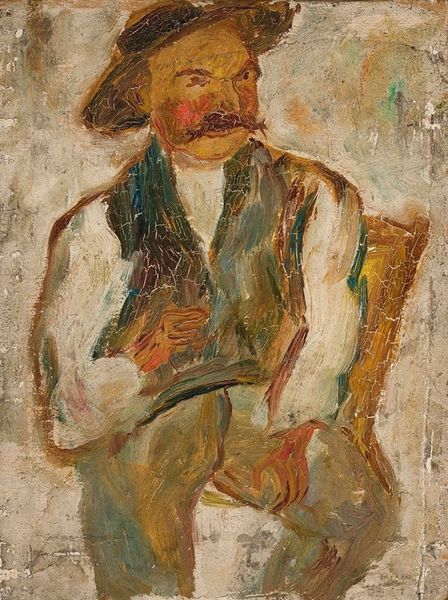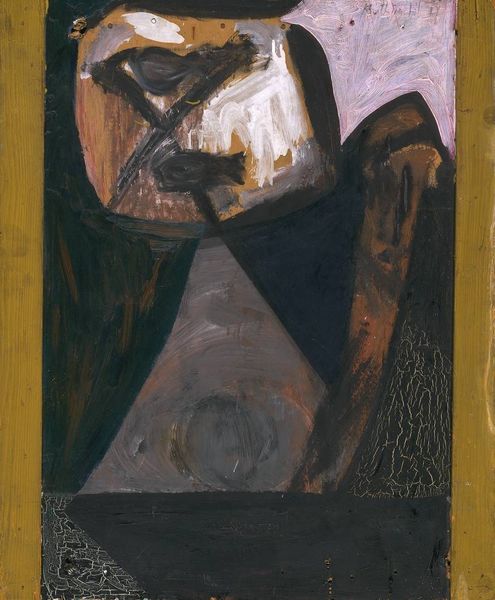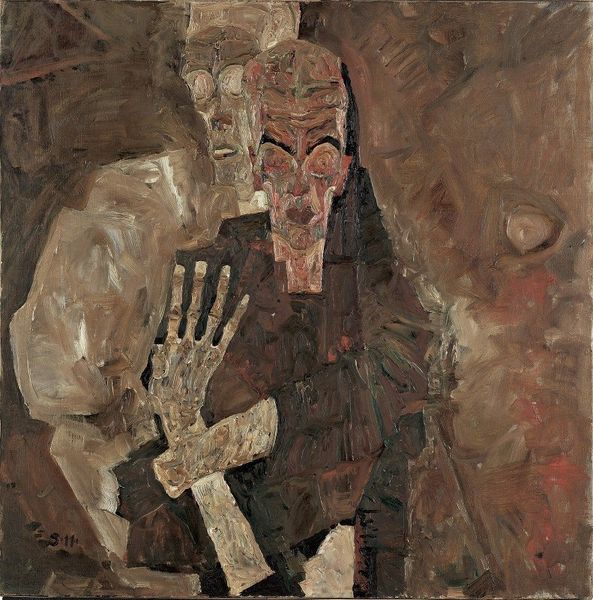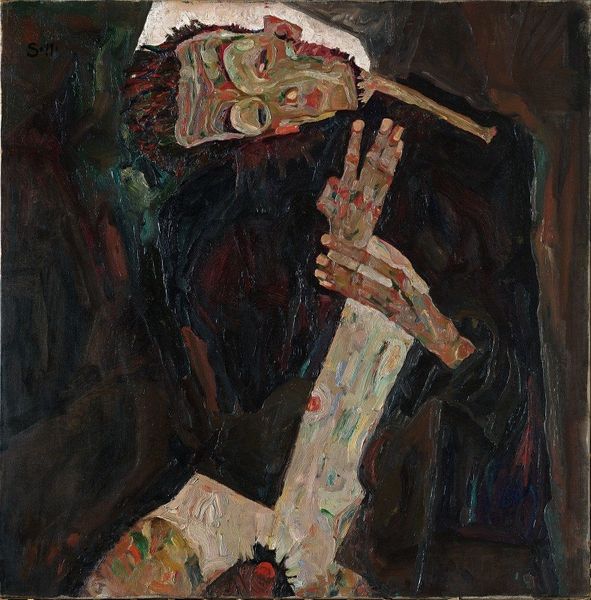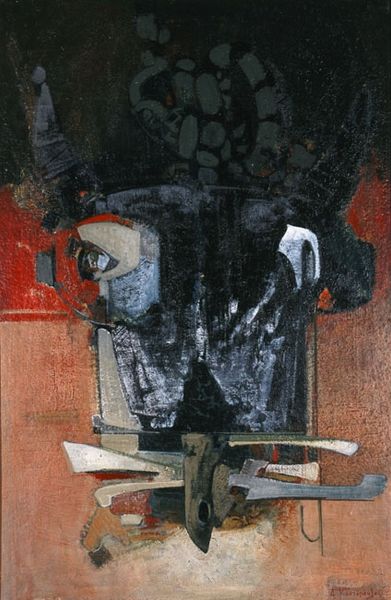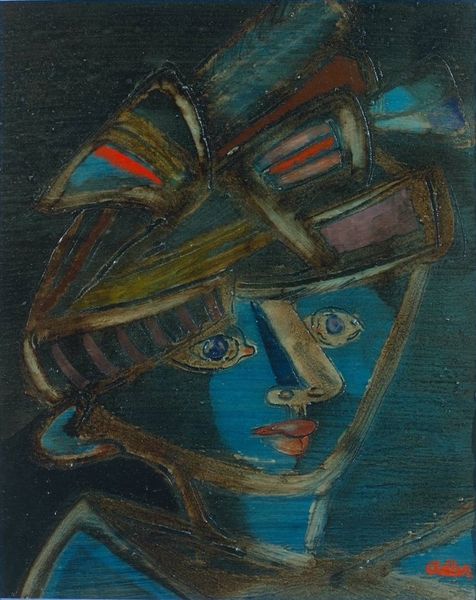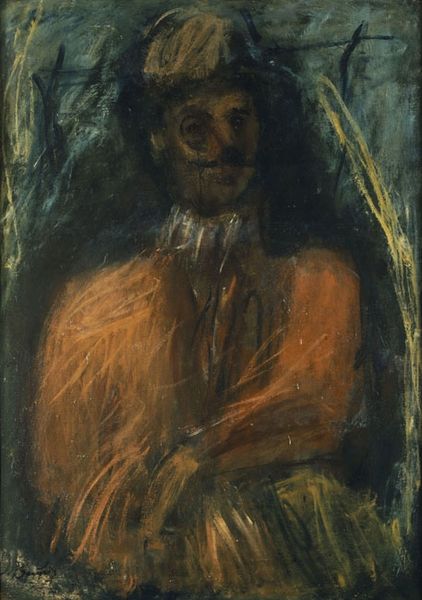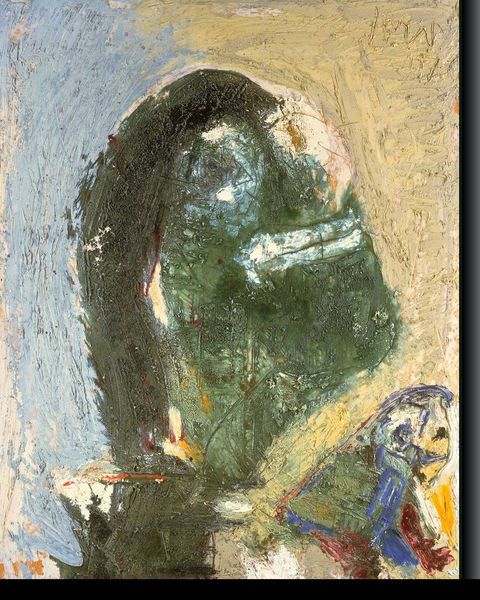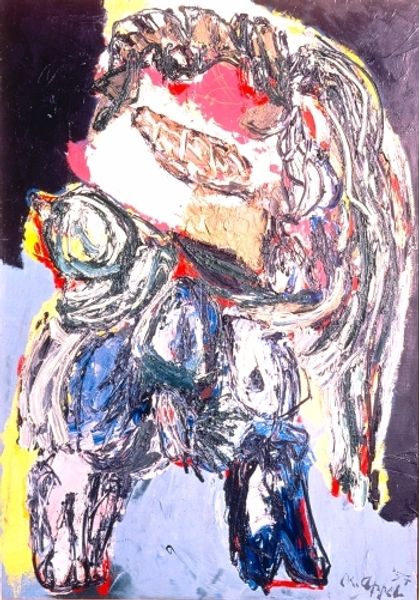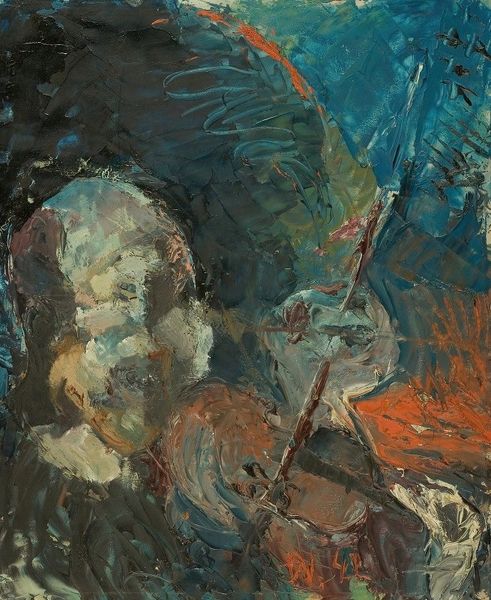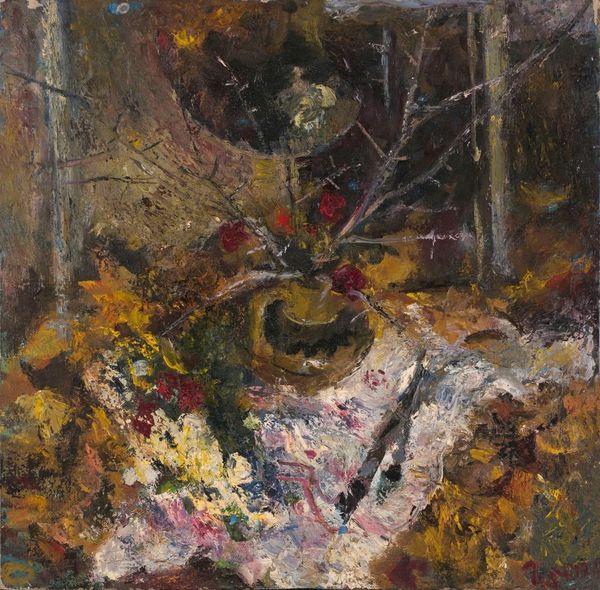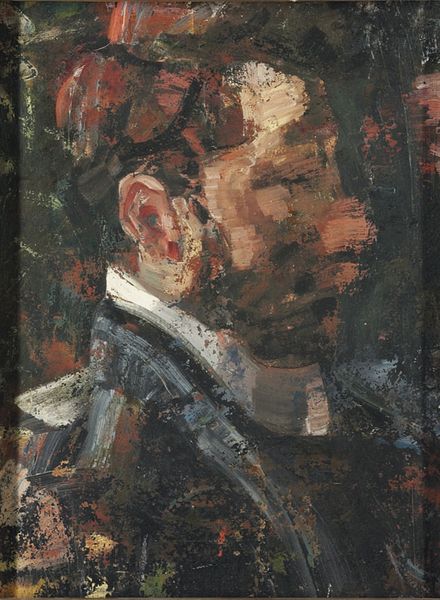
Copyright: Frank Auerbach,Fair Use
Editor: Here we have Frank Auerbach's "J.Y.M. Seated No. 1" from 1981, rendered with thick layers of oil paint. It’s intensely textured, and almost feels sculptural. What do you notice about the materials and the way Auerbach handled them? Curator: The materiality is key. Auerbach built these paintings up layer upon layer. He was known to scrape off paint, reworking surfaces repeatedly, until he achieved something he considered true. We see the history of his labor etched into the canvas. This process speaks to a challenge to traditional notions of the precious art object: art as process, as relentless physical engagement, rather than effortless creation. Editor: So the sheer amount of labor becomes part of the work's meaning? Curator: Precisely! Consider also the consumption of materials: the enormous quantities of oil paint he must have used. This wasn't simply about depicting a sitter; it was about a performative engagement with materiality itself, transforming cheap pigment into something weighty and valuable. Where does ‘high art’ begin if so much of it hinges on a manual process with mass produced commodities? Editor: I never thought about it like that – art created by physical work using everyday materials! Curator: And what of the social context? Auerbach worked in post-war London, a city being rebuilt both physically and psychologically. Does this intense, almost brutal handling of paint, resonate with the city's own construction? Editor: It gives new meaning to the phrase 'built environment'. I understand how Auerbach blurs art and craft, with manual effort at the heart of production. Curator: Exactly. By thinking materially, we see "J.Y.M. Seated No. 1" less as a conventional portrait and more as an index of labor and transformation.
Comments
No comments
Be the first to comment and join the conversation on the ultimate creative platform.
